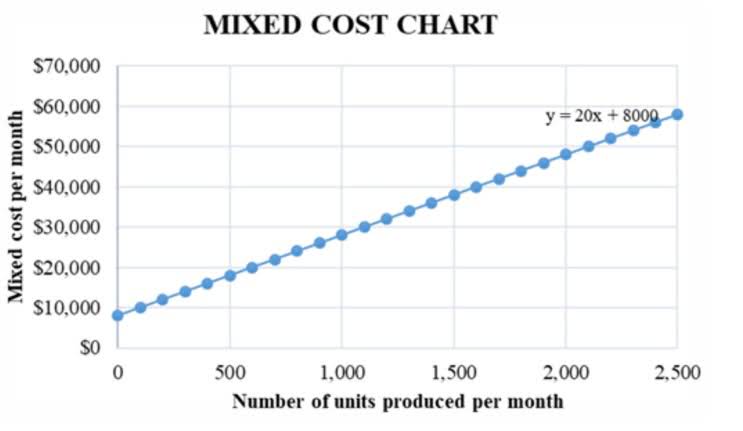
By using TranZact’s inventory and period costs calculator tools, businesses can manage the challenges of financial management. TranZact helps businesses focus on understanding fixed costs using reliable inventory valuation methods. In addition, knowing and managing capacity costs provides a key advantage for companies looking to improve their financial decision-making processes. Period costs, also known as operating expenses, are expenses that are not directly tied to the production of goods or services. Instead, these costs are added over time and charged during a specific accounting period. Period costs are subtracted from the company’s revenue in the period in which they are charged rather than being recorded and allocated to the cost of goods sold (COGS) or inventory.

Period cost in an income statement:
Understanding the Total Period Cost is vital for businesses to evaluate the proportion of their spending that does not directly contribute to production. This insight can lead to more efficient cost management and allocation strategies, ultimately impacting the company’s profitability. Advertising expense is also continually incurred from period to period which means it is not based on a one-time transaction. Costs needed for setting up and keeping production or sales going are known as capacity costs or supportive overheads. They have already been incurred or spent and are separate from current decision-making processes.

Accounting
Therefore, before talking about how a product cost differs from a period cost, we need to look at what the matching principle says about the recognition of costs. Product costs have a direct link with the production of the product, whereas, period costs do not directly link with the product production. The main difference in accounting is their treatment in the financial statements.
TranZact vs Oracle NetSuite: Effective Planning Tools for Your Business
- The costs that are not classified as product costs are known as period costs.
- These costs are not included as part of the cost of either purchased or manufactured goods, but are recorded as expenses on the income statement in the period they are incurred.
- Period costs are costs that were incurred in the current year only but exclude any expenditure that is capitalized in any of the assets i.e. inventory or fixed assets.
- Also termed as period expenses, time costs, capacity costs, etc these are apportioned as expenses against the revenue for the given tenure.
When the product is sold, these costs are transferred period costs from inventory account to cost of goods sold account and appear as such on the income statement of the relevant period. For example, John & Muller company manufactures 500 units of product X in year 2022. Out of these 500 units manufactured, the company sells only 300 units during the year 2022 and 200 unsold units remain in ending inventory.

When the product is manufactured and then sold a corresponding amount from the inventory account will be moved to the income statement. So if you sell a widget for $20 that had $10 worth of raw materials, you would record the sale as a credit (increasing) to sales and a debit (increasing) either cash or accounts receivable. The $10 direct materials would be a debit to cost of goods sold (increasing) and a credit to inventory (decreasing).
- These can be broadly categorized into selling costs and administrative costs.
- The significance of period costs extends beyond mere accounting entries to become a cornerstone in shaping business tactics and financial health.
- The integration of period costs into budgeting and forecasting is a sophisticated exercise that enhances the precision of financial planning.
- Time cost forms a significant portion of indirect costs, hence critical for running the business.
- Before we dive into the calculation process, it’s essential to understand what period cost is.
- As a general rule, costs are recognized as expenses on the income statement in the period that the benefit was derived from the cost.
The tax implications of period costs are an intricate aspect of fiscal management that can influence a company’s tax liability. Since period costs are deductible in the year they are incurred, they can reduce taxable income, thereby affecting the amount of tax owed by the business. It is essential for companies to accurately categorize and document these expenses to ensure they are maximizing their tax deductions. For instance, a business may be able to deduct the full amount of certain administrative expenses, such as office supplies or non-depreciable equipment, in the year they are purchased. These examples clarify that period expenses are incurred over time and not the direct costs related to the product production. When preparing financial statements, companies need to classify costs as either product costs or period costs.
- Companies may decide to absorb certain period costs temporarily to gain market share or enter a new market, setting prices that are competitive yet may not fully cover these expenses in the short term.
- Weighted-average costing mixes current period expenses with the costs from prior periods in the beginning inventory.
- Costs needed for setting up and keeping production or sales going are known as capacity costs or supportive overheads.
- The tax implications of period costs are an intricate aspect of fiscal management that can influence a company’s tax liability.
Pre-Determined Expenses
If liability is contra asset account short-term and due within one accounting period and is not directly tied to the production of a product or inventory costs, then it could be considered a period cost. A good example of this would be the interest incurred on a loan for office equipment that isn’t directly tied to the production of products, as long as that interest is paid within the accounting period. TranZact offers a valuable resource for Indian Manufacturing SMEs needing help with period costs.

Period Costs Example
This also streamlines your Inventory, Purchase, Sales & Quotation management processes in a hassle-free user-friendly manner. Such accruals shall be reported as current liabilities on the balance sheet along with payables and overdrafts. If the amount produced increases, the fixed cost per item decreases, and vice Bookkeeping for Painters versa.
